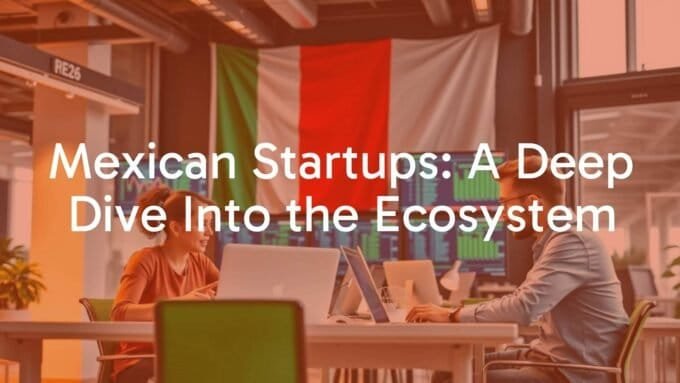Mexico’s economic future sits at a crossroads-full of both opportunities and problems. As the second-largest economy in Latin America and one of the top fifteen worldwide, Mexico matters globally. Right now, the country faces more uncertainty than usual. Recent numbers point to some strength despite tricky challenges from abroad, including changes to U.S. trade policy. Still, there are domestic political changes, discussions about important court and energy reforms, and the always-important relationship with the United States. All of these will help decide where Mexico goes next. This article looks closely at the main directions, hurdles, and chances ahead that are shaping Mexico’s economic future.

Mexico’s Economic Outlook: Main Trends Ahead
Recent Economic Figures
Mexico’s economy has shown a surprising ability to do well, even when outside factors are tough. The Bank of Mexico (Banxico) has noticed this, especially since the U.S. has sometimes added and sometimes dropped tariffs. In a recent update, Banxico increased its estimate for 2023 growth from 0.1% to 0.6%, and for 2026 from 0.9% to 1.1%. That means Mexico grew a bit more than expected, according to the Central Bank’s Governor, Victoria Rodriguez.
At the same time, not everything looks good. Growth has been slow. The main interest rate was cut to 7.75% this month-its lowest point in three years-because of weak growth. This move is supposed to help the economy, but also brings the risk of higher inflation. Deputy Governor Jonathan Heath was the only one against the rate cut. He pointed out that inflation, especially in food, is still a problem. He described Mexico’s economy as being stuck between “slowness and not growing,” making clear that faster growth is needed.
Forecasts for GDP Growth
Looking to the future, forecasts give a mixed message. Banxico is more hopeful for the short term, but many private analysts are more careful. Deloitte, for example, expects only 1% growth for 2025-not a recession, but not much progress either. The government is more positive, predicting 2.3% growth. The World Bank says Mexico’s economy will almost stop growing in 2025, but could slowly recover to 1.8% by 2027. That’s still less than Mexico’s average growth in the past three years. The reasons for this weak outlook include possible changes in trade policy, an upcoming USMCA review, and a slowdown in the U.S. economy.
The Baker Institute’s 2025 Mexico Outlook supports this view, saying Mexico’s growth might nearly stop in 2025, even if the U.S. does well. This difference could keep Mexico from getting all the benefits of a strong U.S. economy. Pressure to cut government spending to reduce a growing deficit, plus legal changes and weaker regulations, could limit private investment and slow the country’s growth even more.
The Biggest Sectors in Mexico’s Economy
Mexico’s economy relies on several sectors, but manufacturing stands out the most:
- Manufacturing: Around 90% of Mexican exports in 2024 came from manufacturing, which also made up 20% of the country’s total GDP.
- Construction: In 2023, construction-helped by large government projects like the Dos Bocas Refinery, Felipe Ángeles International Airport, and Tren Maya-made up almost half of the value added that year.
- Tourism: Tourism continues to offer jobs and income, but depends on external factors like travel rules and economic health abroad.
- Agriculture and the digital sector also play important roles, but face their own uncertainties.

Government plans to lower spending in 2025, especially on big projects, may cause the construction sector to slow. Tourism, farming, and technology are important but their growth will depend on many factors inside and outside the country.
What Do Economic Data and Predictions Say?
Output, Sales, and Employment Data
| Indicator | Recent Statistic |
|---|---|
| Monthly GDP Growth (IGAE, March 2025) | 0.0% (no change) |
| Goods Sector Growth | Flat |
| Services Sector Growth | -0.1% (slight drop) |
| Industrial Production (3-month average, Feb 2025) | +0.1% |
| Retail Sales (3-month average, Jan 2025) | +0.4% |
| Formal Job Growth (March 2025, year-over-year) | +0.8% |
| Formal Sector Unemployment Rate (Feb 2025) | 2.6% |
Overall, the numbers show Mexico’s economy is barely moving forward. Employment is growing, but only a little, and the unemployment rate has stayed the same for months.
Peso and Dollar Exchange Rate
The value of the Mexican peso against the U.S. dollar has changed a lot lately. In March 2025, the peso got stronger, averaging 20.2 pesos per dollar, better than 20.5 the month before. Still, over the last year, the peso usually lost ground against the dollar, mostly because of concerns about the economy and world markets. Uncertainty about U.S. tariffs has also affected the peso.

Remittance Patterns
Money sent home by Mexicans abroad-mostly from the U.S.-is very important, making up between 3.5% and 4% of Mexico’s GDP. But these payments are slowing down. The three-month average fell by 2.6% in February 2025. This is worrying because these funds help people buy things at home. If they keep shrinking, household spending could get weaker, especially if the U.S. economy slows or changes its immigration policies.
Inflation and Prices
Inflation has stayed a problem in Mexico. The consumer price index went up by 3.9% in March 2025 compared to a year before. The “core” inflation (which leaves out energy and food) was 3.7%. Prices for services were up 4.4%. Banxico now expects higher inflation than before, raising its estimate for the end of 2025 to 3.7%. While they still think inflation will eventually reach 3% by late 2026, ongoing price increases-especially for food-are still a main concern for the central bank.
How Are Key Sectors Changing?
Industrial Production and Exports
Industrial production, especially manufacturing, is still very important for exports. The three-month average production rose only slightly in February 2025, barely making up for a drop in January. Mexico’s total exports fell by 0.8% in February-manufacturing exports dropped 0.6% and oil exports by 5.7%. Over the year, manufacturing grew by 1.6%, but oil exports dropped nearly 30%. Mexico sells over 80% of its exports to the U.S., making it sensitive to any changes there.
Tourism Recovery
The article gives few new details about tourism, but it remains a key part of Mexico’s economy, providing jobs and money. Rising prices for some tourism services suggest people are traveling again. With its cultural attractions, Mexico could keep bringing in tourists as long as health and travel policies remain favorable. However, changes elsewhere could easily affect this sector.
Agriculture and Food Processing
Agriculture did better in the first months of 2025, after bad weather hurt crops in late 2024. Agriculture and food processing support both Mexico’s food supply and exports, as well as jobs in rural areas. Price swings in food have added to inflation, pointing out how important this sector is for consumers. Going forward, investments in new technology and policies to help farmers adapt to climate change will be necessary for steady growth.
What Drives Mexico’s Growth?
Nearshoring and New Factories
More companies are moving their factories closer to the U.S., a process called nearshoring. Mexico benefits because it shares a border with the U.S. and has a strong base of factories. Companies want to avoid problems like long shipping times or world events that disrupt supply. This trend could bring more foreign investment, jobs, and technology-but only if Mexico fixes issues like weak infrastructure and builds a strong workforce.

Foreign Direct Investment (FDI)
FDI is money from abroad used to build businesses, and it’s important for Mexico. While nearshoring should help, recent data shows new investments have dropped over 75% in early 2024 compared to last year. Political changes-especially in the courts and business regulations-have made investors less trusting. To attract more FDI, Mexico needs to create a safer, more predictable place for businesses to operate.
Innovation, Technology, and the Digital Sector
Mexico’s digital economy is starting to grow. With a young population and better internet, there’s a chance to develop areas like e-commerce and tech startups, which could create good jobs and raise productivity-for example, by connecting local farmers to new markets. Government and private sector need to work together on skills training and support for research and tech businesses. Right now, money spent on research is below average for developed countries, so there is room to do more.
How Do Social and Regional Gaps Matter?
Inequality and Labour Market Problems
Mexico still faces large gaps between rich and poor. Official data shows that poverty dropped from 43.2% in 2016 to 36.3% in 2022, with 5.4 million people lifted out. Higher minimum wages and more jobs helped. Yet, job growth is now slow. Informal work, underemployment, and education gaps remain. More investment in training and education will help make growth fairer for everyone. If not, inequality could rise again, causing more social problems and holding back growth.
Regional Differences North and South
Northern Mexico, close to the U.S., has more industry and is better-off. Southern Mexico often has higher poverty and less infrastructure. Big projects like Tren Maya were meant to help the south, but as spending winds down in 2025, these areas could lose momentum. Special policies for each region-such as targeted infrastructure, education, and small business loans-are needed, especially where commercial banks haven’t reached.

Migration, Remittances, and Demographics
Many Mexicans migrate to the U.S., and the money they send home is a huge help for families. But if U.S. immigration laws change, or if mass deportations happen, this could sharply reduce such money flows, hurting families and towns that rely on them. Also, Mexico’s demographic trends are changing. Some areas have more young people, others are aging, so training and social support must adapt to these changing needs.
What Problems Could Slow Down Mexico’s Economy?
Trade Policy and U.S. Relations
Mexico’s economic future depends a lot on its trade relationship with the U.S. Any changes-like new tariffs or a break in the USMCA trade deal-could seriously hurt exports, especially since manufacturing makes up so much of that trade. The ongoing uncertainty already limits investment. Mexico needs smart, careful diplomacy to keep or expand access to the U.S. market.
Political Changes and Government Reforms
Internal politics also have big effects. The new government is mostly following old policies-criticized for not solving existing problems. Moves toward one-party control and weaker checks on power worry investors. Changes in government often slow the economy for a while, as businesses and people wait to see what will happen. If these trends continue, investment and growth might suffer more in the future.
Court and Energy Sector Reforms
Two areas concern investors most: court reforms and the energy sector. A recent law now lets people elect judges, replacing a career system. This has led to more market instability and isn’t liked by many foreign investors, especially those with business disputes. The energy sector is also changing. State oil company Pemex is taking on more of a public service role, even though it already carries almost $100 billion in debt. The government may have to use tax money to keep Pemex running, adding strain to public finances and raising doubts about Mexico’s reliability among international lenders.

Inflation and Currency Issues
Mexico’s central bank aims to keep inflation under control, but prices (especially for food) are still rising. The peso is also unstable-recently getting stronger, but trending down over the past year. These make it hard for businesses to plan or for families to keep up with rising living costs. The central bank’s policies will be important for restoring confidence in the money and prices.
Global Slowdown and Recession Risks
Because Mexico relies so much on exporting to the U.S., if the world-or especially the U.S.-slow down, Mexico will feel it. Less outside demand means fewer sales, and business in general slows. Mexico also must deal with the risk of higher borrowing costs if investors see more risk, which could restrict government efforts to help in a downturn. Deloitte’s main scenario doesn’t expect a recession in 2025, but says the chance is higher now than in past years.
Mexico’s Credit Rating: What Might Change?
Factors Influencing Credit Ratings
International investors pay close attention to Mexico’s credit rating. Recently, the budget deficit grew to nearly 6% in 2024, the highest in years, and the debt-to-GDP ratio rose from 44.8% to 51.4%. Main agencies (Fitch, S&P, Moody’s) are worried. Moody’s changed its outlook from stable to negative in late 2024. This happened partly because the government’s growth forecasts look much more optimistic than those of most economists, raising the chance that government income falls short. If key institutions, like independent courts, weaken, Mexico could also see a downgrade, which would make it costlier to borrow money.
Pemex and Other Public Companies
Pemex, the state oil company, owes nearly $100 billion and is not making profits. A new law makes Pemex’s main job to provide energy, not to focus on making money. This could mean even more government spending to keep it going, possibly putting Pemex’s debts on the national books and raising total government debt. That makes investors worry a downgrade is likely unless something changes, raising the government’s costs and possibly reducing investment from abroad.
What Can Make Mexico’s Economy Stronger for the Long Term?
Monetary Policy and Public Finances
Strong long-term prospects depend on keeping inflation under control and reducing public debt. The central bank’s slow, cautious approach is aimed at making sure prices come down without hurting the economy too much. The government’s plan is to lower the deficit from 5.9% in 2024 to 3.9% in 2025, and then to 2.9% by 2030. Success depends on whether income and growth match their goals. If not, Mexico might need better tax collection and more efficient spending-perhaps spending more on things that help the economy, like infrastructure or education.
Raising Productivity
Mexico has for years grown slower than it could. Improving productivity is key. Skills training, especially through programs that mix study and work, can help more people get good jobs and allow businesses to compete. Early childhood education and childcare are also important if more women are to join the workforce. Investment in technology and support for innovative businesses can also push productivity higher, but private sector involvement is needed.
Preparing for Climate and Environmental Risks
Dealing with climate change-like water shortages or drought-is becoming more important for Mexico. Better water use is a must, both for cities and for companies. The energy sector also needs to use cleaner sources. Encouraging private investment in solar or wind power could help Mexico meet environmental promises and keep bigger companies interested. Focusing only on national oil and energy companies could drive foreign investors away, so new policies should encourage greener growth.
FAQs on Mexico’s Economic Future
Should investors feel positive about Mexico’s future?
There are reasons to be hopeful, such as a strong manufacturing base and the country’s location. Mexico could benefit from companies looking for closer suppliers (nearshoring). The central bank’s management of inflation is also a plus. At the same time, risks are real-uncertainty about court and energy reforms, changes in U.S. trade policy, and challenges with public finances or deeper reforms must be watched carefully. Investors should be careful, keep up with changes, and watch key relationships like that with the U.S.
What are the biggest risks to Mexico’s economy?
The top risks are: unstable policy changes inside the government, especially in courts and the energy sector; high debt at companies like Pemex; possible new U.S. tariffs or a tough USMCA renegotiation; stricter immigration rules hurting remittances; ongoing inflation; slow formal job growth and income differences; and weak outside demand if the world economy slows down.
How can Mexico stay strong as the world changes?
Mexico should:
- Keep the legal system strong and predictable.
- Diversify its trade-don’t rely only on the U.S.
- Encourage more spending and investment inside the country.
- Support education, vocational training, and research.
- Build and maintain key infrastructure, and manage resources like water carefully.
- Stay disciplined with public spending and monetary policy.
If Mexico acts in these areas, it can create a stronger economy and be better prepared for outside shocks.














Leave a comment